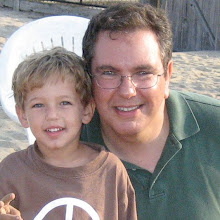Leica M3. Production began in 1954.

There’s no shortage of this camera in the world but it is what every hopeful photojournalist wanted for as long as I have loved photography. Holding one in your hands was feeling a machine that you knew was the same as what was used by every major influential photographer from the 1960s. Its design was instantly recognizable as the camera you'd see at every major news event of the time. The camera is compact but hefty. You can feel the precision in these cameras. The tight tolerances they were built to. And shooting one that happens to have a good lens on it…sharp! Amazingly Leica has kept their standards high and even today you cannot find a more finely crafted piece of camera gear.
Nikon SP. Production began in 1957.

More, better camera. The Japanese camera manufacturers were the first of their country’s companies that really made the effort to raise the quality of their product. As a child I understood items made in Japan were not very good. Cheap junk was what was said. The best cameras were made in Germany and the good everyman’s camera was American made. In the late 1930s Japan began making knock offs of the German Leica and Contax cameras. I’ve heard that with the onset of WWII, Germany shared manufacturing data with the Japanese so camera production could be curtailed in Germany to allow those plants to make precision optics for the war machine. The cameras Japan made were duplicates of the German cameras. Canon and Minolta copied Leica. Nikon copied the Contax. By the time of the Korean War the Japanese were making really fine cameras but weren’t recognized for their progress in quality. It was journalists and U.S. soldiers that began buying and using these cameras. The Nikon rangefinders had some unique features added to them that made them favorites. The SP was the most feature-laden camera of its time. It had two viewfinders that covered lenses from 28mm to 135mm. It took a motor drive. Most importantly it directly led to the development of the Nikon F SLR camera, arguably the most important 35mm camera to ever come out of Japan. Many of its features came directly from the SP.
Kodak Bantam Special.

The number of cameras designed to also be works of art (or fashion accessories) are few and far between. The trend is present today with colored cameras with slick designs but really they’re pretty at best but not very good cameras. Going back in time, many cameras were dolled up with fancy leather and special finishes and sold as special editions. The Kodak Bantam Special was a true jewel. Beautiful Deco design and precision construction. The only sad thing about this camera is they used a film format that was short lived, roll film size 828. An early attempt to make a camera as thin as possible. This camera came to market in 1936. It featured a remarkably sharp and fast 45mm f2.0 lens. Was extremely compact. Had a true rangefinder for accurate focusing. The lens folded into the camera making it truly pocketable. Look at the design. It’s more beautiful in person.
From time to time I’ll go into the cupboards and show you some other interesting items I’ve collected. If you have a question about an old camera you have, please ask me. If you have any camera equipment, modern or vintage, you want to sell please send me a list and I’ll make my best offer. So you know, pretty much any Kodak, Polaroid and old movie cameras will likely have no value but there are exceptions there too. If your Dad or Mom was a photography nut and spent your inheritance on their toys, there may be something in the attic that will pay you back. Go take a look. Till next time.
